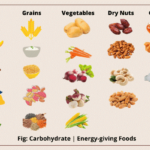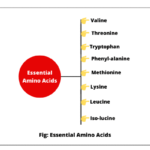Hund’s Rule of Maximum Multiplicity
Hund’s Rule of Maximum Multiplicity, commonly known as Hund’s Rule, deals with the filling of electrons into orbitals belonging to the same subshell or orbitals of equal energy, known as degenerate orbitals. This rule was proposed by a German physicist, Friedrich Hund, in 1927.
Hund’s rule states that the pairing of electrons in orbitals within the same sub-shell (p, d or f) does not take place until each orbital has one unpaired electron. In other words, the electron pairing in orbitals of belonging to the same sub-shell (p, d, or f) does not occur until all the orbitals of that sub-shell are singly filled. Moreover, the singly filled orbitals must have the electrons with parallel spins.
Hund’s rule of maximum multiplicity can also be restated in any of the following form:
- When electrons enter in orbitals of a given subshell, electrons will pair up only when each orbital has had at least one electron each.
- The orbitals within a particular subshell are first filled singly and then the pairing of electrons in each orbital begins.
- None of the degenerate orbitals—such as pₓ, pᵧ, p𝓏 or dₓᵧ, dᵧ𝓏, etc. will have two electrons until any other orbital is vacant.
Real-life Example of Hund’s Rule
Let’s take an example to understand the concept of Hund’s Rule. Consider people getting on an empty bus. When people enter a two-seater empty bus, they usually prefer the window seats. They rush to occupy the window seats first, and only when all the window seats have one person each do others start to sit next to them.
This also happens in Hund’s rule, where each orbital in a subshell is singly occupied before any pairing occurs. This means that the pairing of electrons does not take place until all the degenerate orbitals have one electron each.
Hund’s rule is based on the fact that two electrons in the same orbital feel greater electrostatic repulsion because they are both negatively charged. So, when electrons are filling orbitals of the same energy, they avoid pairing up for as long as possible to reduce this repulsion.
Moreover, the singly occupied orbitals should have electrons with parallel spin because this makes the atom more stable and lowers its energy. That’s why we can also call this rule as a rule of minimum energy.
Examples on Hund’s Rule of Maximum Multiplicity
Consider three p-orbitals (px, py, and pz), which all have the same energy. How will you fill electrons in these orbitals? You can fill three electrons into three p-orbitals in two different ways, as shown in the digram below.

An orbital is often represented by a circle or square box, which can hold up to two electrons. As you can see in the orbital diagram, electrons are represented by arrows: an upward arrow indicates clockwise spin, and a downward arrow indicates anticlockwise spin. To show how electrons are distributed among an atom’s orbitals, these arrows are placed over horizontal lines or boxes that represent the orbitals.
Examples based on Hund’s Rule
Let us write electronic configuration of some elements on the basis of above Hund’s rules and the sequence of energy levels.
1. Hydrogen (Atomic number = 1):
- The electronic configuration of hydrogen is 1s1.
- Since hydrogen has only one electron, it must go to 1s orbital, as shown in the below diagram.

2. Helium (Atomic number = 2):
- The electronic configuration of helium is 1s2.
- In helium atom, the second electron can also go into 1s orbital with opposite spins, as shown in the below diagram.
3. Lithium (Atomic number = 3):
- The electronic configuration of lithium is 1s2, 2s1.
- First two electrons fill the 1s orbital, and the third goes to the 2s orbital, as shown in the above diagram.
4. Beryllium (Atomic number = 4):
- The electronic configuration of beryllium is 1s2, 2s2.
- The fourth electron in beryllium occupies 2s orbital.
5. Boron (Atomic number = 5):
- The electronic configuration of boron is 1s² 2s² 2p¹.
- In the case of boron, the four electrons completely fill 1s and 2s orbitals. 2p orbital has three degenerate orbitals (2pₓ, 2pᵧ, 2p𝓏). The fifth electron goes into one of the 2p orbitals.
6. Carbon (Atomic number = 6):
- The electron configuration of carbon is 1s² 2s² 2p².
- The six electron in the case of carbon also goes into 2p subshell. The two electrons in 2p sub-shell will go in different orbitals because according to Hund’s rule electron pairing cannot take place in orbitals belonging to the same sub-shell until all orbitals get one electron each. Hence, the orbital diagram (electronic configuration) of carbon is shown in the above.
7. Nitrogen (Atomic number = 7):
- The electron configuration of nitrogen is 1s² 2s² 2p³.
- In the case of nitrogen, all three 2p orbitals (2pₓ, 2pᵧ, 2p𝓏) are singly occupied with electrons of the same spin. In other words, N atom has three unpaired electrons in 2p orbital. This follows Hund’s Rule perfectly.
8. Oxygen (Atomic number = 8):
- The electron configuration of oxygem is 1s² 2s² 2p⁴.
- The first three electrons of 2p sub-shell will fill in different orbitals with the same spin and the fourth electron of 2p subshell pairs up with opposite sign with one of them.
Implications and Applications of Hund’s Rule
Hund’s Rule plays a vital role in multiple areas of chemistry and physics:
1. Predicting Magnetic Properties: Atoms or ions with unpaired electrons exhibit paramagnetism, whereas those with paired electrons are diamagnetic. For example:
- Nitrogen (7 electrons): The electronic configuration of nitrogen is 1s² 2s² 2p³. All three 2p electrons are unpaired, therefore, it exhibits paramagnetic nature.
- Neon (10 electrons): The electronic configuration of neon is 1s² 2s² 2p⁶. All electrons are paired, therefore it shows diamagnetic nature.
2. Stability of Electron Configurations: Elements with half-filled or fully-filled degenerate orbitals are extra stable due to exchange energy. Here, the exchange means shifting of electrons from one orbital to another within the same subshell. For examples:
- Chromium (Cr, Atomic number = 24): Its expected electronic configuartion is [Ar] 3d⁴ 4s², but the actual is [Ar] 3d⁵ 4s¹ because the half-filled d subshell is more stable.
- Copper (Cu, Atomic number = 29): Its expected electronic configuration is [Ar] 3d⁹ 4s² but the actual is [Ar] 3d¹⁰ 4s¹ because the fully d subshell is more stable.
3. Chemical Bonding and Reactivity: Hund’s Rule affects the number of unpaired electrons available for bonding. For example, in the case of carbon (1s² 2s² 2p²), the two unpaired electrons can form two covalent bonds (as in CH₄). Promotion and hybridization also take Hund’s Rule into account.
Hund’s Rule and Maximum Multiplicity
The term “maximum multiplicity” relates to the spin multiplicity of an atom or molecule. Spin multiplicity is given by the formula as:
In the above formula, S is the total spin quantum number (i.e. sum of all individual electron spins).
Example: nitrogen (2p³):
- In the case of nitrogen 2p subshells, all three electrons have the same spin (say +½).
- Total spin S = 3 × ½ = 1.5
- Multiplicity = 2(1.5) + 1 = 4 → Quartet
Greater multiplicity indicates a higher number of unpaired electrons and often correlates with higher stability.
Exceptions and Limitations of Hund’s Rule
Hund’s Rule of maximum multiplicity is generally reliable for predicting the electronic configurations of atoms. However, there are some important exceptions, that occurs especially in more complex atoms and ions in transition metals and heavier elements. These exceptions from Hund’s rule happen due to factors like:
- Spin-orbit coupling
- Relativistic effects
- Crystal field splitting
For example, in coordination chemistry, strong field ligands (such as CN⁻ or CO) can cause low-spin configurations, even in cases where Hund’s Rule would normally predict a high-spin arrangement. This is because strong field ligands create a large crystal field splitting (Δ) which favors the pairing of electrons in the lower energy orbitals, rather than maximizing unpaired electrons in the higher energy orbitals.
Relation to Other Principles
1. Aufbau Principle vs Hund’s Rule
- The Aufbau principle tells about the order in which orbitals are filled with electrons from lower to higher energy levels. In contrast, Hund’s Rule tells about the manner of filling degenerate orbitals within the same subshell. Together, they rule the correct electron configuration of atoms.
2. Pauli Exclusion Principle
- Hund’s Rule follows the Pauli Exclusion Principle, which states that no two electrons in an atom can have the same set of four quantum numbers. This means that even when electrons are occupying separate orbitals (as per Hund’s Rule of maximum multiplicity), they must still differ in at least one quantum number, specifically their spin quantum number.






